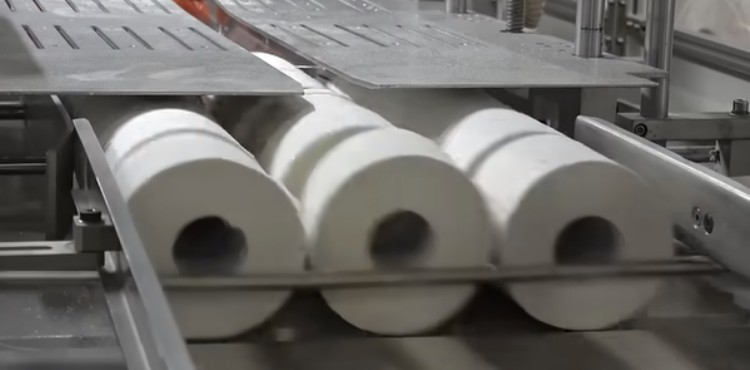We use toilet paper vastly but do you ever think of why was toilet paper invented? Have you ever wondered why did Joseph Gayetty invent toilet paper? The answer to this question goes back to the early 1800s when Joseph Gayetty sought a solution to an age-old problem.
As it turns out, he was the first to successfully create a product that would revolutionize hygiene and sanitation for centuries to come.
In this blog post, we will explore the reasons why Joseph Gayetty invented toilet paper, its history, and its impact on modern society.
Why Did Joseph Gayetty Invent Toilet Paper? (Back to History)
In today’s world, toilet paper is a common and essential commodity that is found in every household and public restroom.
However, it’s not something that we give much thought to on a daily basis. But have you ever wondered about the origins of toilet paper? So why did Joseph Gayetty invent toilet paper? Read on to find out!
Traced back to the 19th century when Joseph Gayetty inventor of toilet paper, introduced the world’s first commercially available toilet paper in 1857. So, Joseph Gayetty is credited with inventing the first commercially available toilet paper in the mid-19th century.
At that time, toilet paper as we know it today did not exist. Instead, people used a variety of materials, including leaves, corn cobs, and even old newspapers, to clean themselves after using the bathroom.
Joseph Gayetty saw the need for a more hygienic and effective solution and set out to create one. He came up with a product that he called “Gayetty’s Medicated Paper,” which was made from aloe-infused paper sheets and was intended to be used for personal hygiene purposes.
Gayetty’s product was initially met with skepticism and resistance, as many people were reluctant to adopt a new form of personal hygiene.
However, Gayetty was persistent, and he marketed his product heavily, even going as far as to print his name and face on each sheet of paper.
Over time, Gayetty’s Medicated Paper gained popularity, and eventually evolved into the toilet paper that we know today.
Although Gayetty did not invent toilet paper, he revolutionized the way people treated toilet paper and how they thought about it. His invention paved the way for a new era of personal hygiene, one that we still benefit from today.
The State of Personal Hygiene Practices In The Mid-19th Century
In the mid-19th century, personal hygiene practices were generally primitive and unsanitary by modern standards. The concept of personal hygiene, as we know it today, did not exist, and many people did not have access to basic sanitation facilities or products.
In rural areas, it was common for people to use whatever materials were available to clean themselves after using the bathroom. Leaves, grass, and corn cobs were commonly used, while others used scraps of cloth or rags.
These materials were often reused multiple times, which meant that they were not effective at preventing the spread of germs and diseases.
In urban areas, public latrines were sometimes available, but they were often overcrowded, poorly maintained, and unsanitary. Wealthier individuals might have access to indoor flush toilets, but these were not yet widely available or affordable for the general population.
Disease and illness were spread because of inadequate sanitation facilities in the mid-19th century. In this way, Joseph Gayetty introduced a hygienic, effective method of cleaning yourself after using the bathroom with his invention of toilet paper.
The Impact That Gayetty’s Invention Had on Personal Hygiene Practices

Joseph Gayetty’s invention of toilet paper had a significant impact on personal hygiene practices. Prior to the invention of toilet paper, people used a variety of unsanitary materials to clean themselves after using the bathroom.
Gayetty’s Medicated Paper provided a more hygienic and effective solution, which helped to prevent the spread of disease and illness.
Gayetty’s invention also helped to establish the concept of personal hygiene as we know it today. It paved the way for the development of other personal hygiene products, such as soap and hand sanitizer, which have become essential components of modern personal hygiene practices.
Today, toilet paper is a ubiquitous product that is used by billions of people around the world on a daily basis. It has become a symbol of modern personal hygiene practices and is an essential component of public health and sanitation infrastructure.
Without Gayetty’s invention, it is likely that personal hygiene practices would be very different today. And the spread of disease and illness would be much more widespread.
Final Thoughts
In conclusion, Joseph Gayetty’s invention of toilet paper represented a major step forward in personal hygiene practices. It prevented the spread of disease and illness by providing a more hygienic solution for cleaning the bathroom after use.
Gayetty’s invention also helped to establish the concept of personal hygiene as we know it today and paved the way for the development of other personal hygiene products.
Today, toilet paper is a ubiquitous product that is used by billions of people around the world on a daily basis. Now, after reading this post you may now be clear about who invented toilet paper and why.

I’m Lewis S. Binder and I’m a full-time student. Home Improvement on bathroom items, toiletries, shower heads, etc a significant impact on our lives. That’s why I’d like to make it easy.


3 thoughts on “Why Did Joseph Gayetty Invent Toilet Paper?”